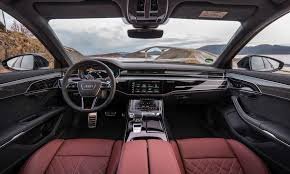Engine Performance: The Key to Power, Efficiency, and Driving Experience
Engine performance is the cornerstone of a vehicle’s ability to deliver the driving experience that enthusiasts and everyday drivers alike seek. Whether you’re after thrilling acceleration, top speed, fuel economy, or smoothness on the road, engine performance encompasses a variety of factors that influence how a car behaves under different driving conditions. In this article, we’ll explore what engine performance means, the key factors that affect it, and how modern technology is shaping the future of engine performance.

Table of Contents
What is Engine Performance?
Engine performance refers to how effectively an engine produces power, how efficiently it consumes fuel, and how smoothly it operates during various driving conditions. A well-performing engine delivers the optimal balance between power output (horsepower), torque, fuel efficiency, and emissions control, ensuring that the vehicle runs smoothly, remains responsive, and provides the necessary power for a wide range of driving needs.
Key performance characteristics include:
- Horsepower: The engine’s ability to generate power. Horsepower is often associated with a car’s top speed and acceleration capabilities.
- Torque: The twisting force the engine generates. Torque is vital for acceleration, particularly at lower speeds, and is crucial for towing and hauling.
- Acceleration: The rate at which a vehicle speeds up, typically measured from 0 to 60 mph or 0 to 100 km/h. Acceleration depends on both horsepower and torque.
- Fuel Efficiency: How effectively the engine converts fuel into energy. This is measured as miles per gallon (MPG) or liters per 100 kilometers (L/100 km).
- Emissions: The environmental impact of the engine’s operation. Modern engines are designed to reduce harmful emissions to comply with strict environmental standards.
- Smoothness and Responsiveness: How well the engine delivers power and responds to driver input, which affects the overall driving experience.
Factors Affecting Engine Performance
Several factors determine how an engine performs. These factors interact with each other in complex ways, influencing the car’s power output, fuel efficiency, and overall driveability.
- Engine Size and Configuration
- Engine displacement: Engine size is commonly measured in liters (L) or cubic centimeters (cc). Larger engines generally produce more power due to their increased displacement and capacity for more air and fuel.
- Engine configuration: The configuration of the engine’s cylinders affects its performance. Common engine types include inline (I4, I6), V-shaped (V6, V8), and flat (Boxer) engines. Inline engines are compact and fuel-efficient, while V8 engines deliver high horsepower for muscle cars and trucks.
- Fuel Type
- Gasoline: Gasoline engines are the most common in passenger cars and offer a good balance between power and efficiency.
- Diesel: Diesel engines are known for their high torque and fuel efficiency, especially at lower RPMs. Diesel engines are often used in trucks, heavy-duty vehicles, and larger cars.
- Electric: Electric motors offer instant torque delivery, providing rapid acceleration and smoothness. They have the advantage of producing zero emissions during operation.
- Hybrid: Hybrid engines combine a gasoline or diesel engine with an electric motor, providing a balance between fuel efficiency and performance.
- Turbocharging and Supercharging
- Turbocharging: A turbocharger uses exhaust gases to spin a turbine, which then forces more air into the engine’s cylinders. This increases the air-to-fuel ratio, leading to more power without increasing engine size. Turbocharged engines are often used to increase horsepower in smaller engines, improving both performance and fuel efficiency.
- Supercharging: A supercharger is powered by the engine itself, usually through a belt, and works similarly to a turbocharger. Supercharging boosts engine performance by compressing more air into the cylinders for greater power output.
- Compression Ratio The compression ratio refers to the ratio of the cylinder’s volume when the piston is at the bottom of its stroke to the volume when the piston is at the top. Higher compression ratios can lead to more power and efficiency, but they require higher-octane fuel to prevent knocking (pre-ignition). Sports and performance cars often have high-compression engines to maximize power output.
- Fuel Injection Technology
- Multi-Point Fuel Injection (MPI): This system uses multiple injectors to deliver fuel to each cylinder separately. This results in more accurate fuel delivery, improved combustion, and better fuel efficiency.
- Direct Injection (DI): Direct injection systems inject fuel directly into the combustion chamber under high pressure, allowing for more efficient fuel usage and better performance. DI systems often provide better fuel economy, higher power output, and reduced emissions.
- Exhaust and Intake Systems
- Intake System: The intake system controls the flow of air into the engine. Efficient intake systems improve engine performance by allowing more air to reach the combustion chamber. Performance-oriented intake systems, like cold-air intakes, are designed to optimize airflow and boost engine efficiency.
- Exhaust System: The exhaust system removes gases produced during combustion. High-performance exhaust systems, such as performance headers and free-flow catalytic converters, reduce exhaust backpressure, helping the engine breathe better and perform more efficiently.
- Engine Management and Tuning Modern engines rely on an electronic control unit (ECU) to manage fuel delivery, ignition timing, and other performance variables. Advanced engine management systems allow for more precise control over engine performance, improving efficiency and responsiveness.
- ECU Tuning: ECU tuning or remapping involves adjusting the parameters of the engine control unit to optimize performance. Tuning can increase horsepower, improve throttle response, and enhance fuel efficiency.
- Chip Tuning: This involves altering the engine’s software to optimize fuel mixture and ignition timing for better performance, often leading to improved acceleration and engine efficiency.
- Engine Cooling and Lubrication
- Cooling: An efficient engine cooling system is crucial for maintaining optimal performance. Engines that run too hot can suffer from reduced performance, overheating, or even damage. Modern cooling systems often feature thermostats, radiators, and cooling fans to regulate engine temperature.
- Lubrication: The lubrication system ensures that all moving parts within the engine are properly lubricated, reducing friction and preventing excessive wear. Proper lubrication is essential for maintaining engine performance over time.
- Weight and Aerodynamics The weight of the vehicle and its aerodynamics can significantly affect engine performance, especially acceleration and fuel efficiency. Lighter vehicles require less power to move and can accelerate more quickly. Aerodynamic design minimizes drag, improving both fuel efficiency and top speed.
The Role of Engine Performance in Driving Experience
The overall driving experience is directly influenced by engine performance. The connection between the engine’s power output and how it translates into real-world driving sensations is what makes a car enjoyable to drive.
- Acceleration and Speed: Engine performance defines how quickly a car accelerates, whether you’re merging onto the highway or taking off at a stoplight. High horsepower and torque contribute to a thrilling acceleration experience, with sports cars and supercars excelling in this area.
- Handling and Responsiveness: Engine performance also affects how the car responds to throttle input, steering, and braking. A smooth and responsive engine delivers a more enjoyable driving experience by providing predictable and immediate reactions to driver inputs.
- Fuel Efficiency: A well-tuned engine that combines power with fuel efficiency offers better range, fewer trips to the fuel station, and lower overall running costs. Modern engines, especially in hybrid or electric vehicles, aim to deliver the best of both worlds—performance and fuel economy.
- Smoothness and Comfort: Engine performance is closely linked to how smooth the vehicle feels during regular driving. A well-tuned engine provides a smooth, quiet ride without unnecessary vibrations or jerky shifts. This is particularly important in luxury cars, where comfort is paramount.
Advancements in Engine Performance
Recent technological advancements are pushing the boundaries of engine performance. For example, electric vehicles (EVs), powered by electric motors, offer instant torque, providing exceptional acceleration and performance without the complexity of a traditional combustion engine. Hybrid engines, combining both electric and internal combustion technology, are able to balance performance with fuel efficiency and reduced emissions.
Additionally, downsized turbocharged engines have become common in passenger vehicles, offering performance levels similar to larger engines while maintaining improved fuel efficiency. Advances in variable valve timing (VVT) and variable compression ratios have made engines more adaptable, optimizing performance based on driving conditions.
Conclusion
Engine performance is a complex and multifaceted aspect of automotive engineering that affects nearly every aspect of how a vehicle drives. From horsepower and torque to fuel efficiency and emissions, the engine is the heart of the vehicle, determining its overall capability and the driving experience it delivers. Modern advancements in technology, including turbocharging, fuel injection systems, and hybrid powertrains, are continually shaping how we think about engine performance, pushing the limits of power, efficiency, and sustainability.
Understanding engine performance not only helps car enthusiasts appreciate the nuances of their vehicles but also gives everyday drivers the knowledge they need to make informed decisions about their car purchases. As the automotive world evolves, the future of engine performance promises even more exciting innovations, whether through cleaner engines, greater power, or more efficient designs.








Post Comment